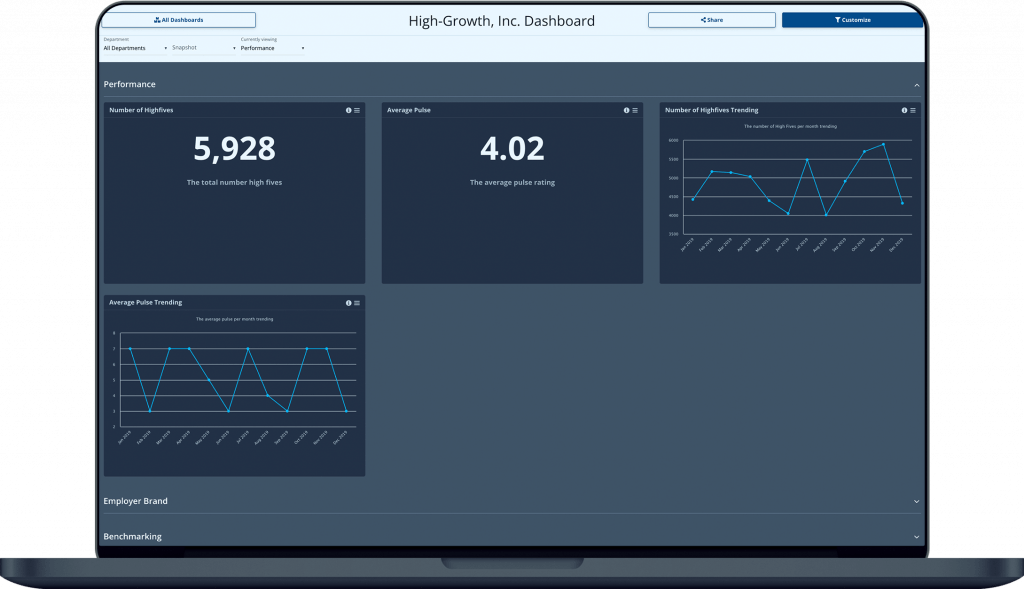There has been a lot of talk about burnout in the past few years. It’s not just a pop-psychology term or hyperbole: studies show employee burnout is real and can now be measured. Preventing burnout is critical to avoid more significant problems. Ignore it and you lose money, productivity and your employees.
What is Employee Burnout?
Employee burnout occurs when high-performing workers are pulled in too many directions – leaving them feeling overwhelmed. Ironically, these once-stellar employees lose focus, adopt a cynical attitude against their work or the company, lose confidence and make more errors. This compounds their bad feelings about work and the cycle continues. In other words, from a management and employee standpoint, everyone loses.
Markers of Burnout
The most concrete example is clearly overtime hours. Working overtime, or more than 40 hours per week, on a regular basis shows something is amiss: either the employee is overburdened with projects or not using his time wisely, and neither situation is good. Again, this is an easy metric to gauge with hourly employees but will take more investigation for salaried workers.
Once burnout takes hold, it’s a vicious cycle. It will show a worker’s attitude towards his responsibilities, co-workers, and the company. If you employ someone who previously was pleasant and engaging at work but now appears unhappy most of the time, that could be due to burnout.
A mistake – confusing a client name, entering the wrong data set, or failing to follow up on a sales lead, as examples, happens occasionally. When mistakes morph into a pattern of frequent errors, you should start to be concerned. As burnout continues, workers will lose confidence in their abilities. They’ll second-guess their judgment and sometimes will overcorrect until they get information wrong.
Consequences of Burnout and 2021 Burnout Trends
If left unaddressed, workers suffering from burnout can cause many problems. In the beginning, you see absenteeism and poor performance. As time wears on, the worker’s productivity slows, and he may develop health problems or addiction issues. These lead to higher healthcare costs and even on-the-job accidents. Major performance problems can damage your brand or even leave you open to lawsuits. At the tail end of burnout, you will have talent quit, forcing you to spend money on recruitment and training for new hires.
There may be no more obvious example of the widespread effects of burnout than what is known as the Great Resignation. Workers voluntarily leaving jobs hit a high point in October 2020, and according to the 2021 Google Year in Search report, people are also moving on and moving up, as evidenced by a 60% increase in searches containing ‘how to write a resignation letter’ from April to June 2021.
According to experts, workers are re-evaluating their goals after the pandemic shutdowns. And of those were white-collar workers suffering from burnout. When management didn’t work with them to improve the workplace, they simply left.
Tips To Help Employees Prevent Burnout
People tend to hide the fact that they are under stress, because they think it’s seen as a weakness, said Shelly Morales, Vice President of People (HR & Facilities) at Balbix, a cybersecurity start-up in Silicon Valley. Work stress can spill over to relationship problems and home life, affecting your employees’ attitudes and outlook. She advises opening up conversations with employees to check in on how they are doing.
Moreover, taking care of one’s mental health is no longer seen as a taboo topic. Workplace disruptions are much more understood since the 2020 pandemic started, and corporate culture worldwide developed to empathize with individuals’ life circumstances.
Interruptions during meetings? Ok. Understood. Taking care of kids at home while working? Not the end of the world, and not derided as unprofessional anymore.
“There is more tolerance than ever,” Morales said.
Workers crave flexibility in their schedules. Lobsenz said his company doesn’t measure progress by how long people are sitting in their seats, but if they are meeting their goals. “Offer flexibility in terms of how people work. If someone needs to be off the computer in the morning, that’s fine, make up the time,” he says.
You can also be proactive about employee wellbeing in your benefits. Among corporations, there has been a recent shift from reactive health benefits such as medical, dental, and vision coverage to preventative care. The shift has many employers offering mental health resources, and programs addressing the financial, physical, intellectual, and social aspects of employees’ lives.
It sounds simple, and it is. Encourage your staff to use their paid time off and consider adding “mental health days,” or extra holidays during the year. Companies across the United States are using this method because it works.
Avoiding Burnout in Remote Workers
For some people, the dramatic shift to remote work during the pandemic was a fantastic development. For others, it was a nightmare come to life. Zoom-meeting fatigue started to creep into everyday life and psychologists warned us to take more breaks and unplug.
Some strategies to help remote employees avoid burnout include:
- Randomly check in and say hello. Over communicate if need be.
- Coach and guide managers to be tolerant of technical problems
“It’s the connection piece that is really important,” said Morales.
Surveys showed Lobsenz’ company that there were similarities about remote work fatigue that crossed geographic lines, from New York City to the suburbs, as well as positions within the company, from entry-level to senior managers.
Not everyone had a comfortable, quiet place to run a home office. This was especially prevalent in the bigger cities where employees lived in small apartments. So the company created a work-from-home stipend, to be used in any way the employees saw fit. Some spent it on childcare, while others needed office furniture. The key was to make the employees feel understood and accommodated in a time of drastic change.
Karen Casey, head of people and culture at Canidae Pet Food in Connecticut, said her company has been challenged since migrating from in-office to an at-home platform. Some of the employee engagement had been mired from being online from day to night.
“Your engagement is through a computer screen, instead of walking down the hall and having a conversation,” she said.
Casey said at Canidae, she and her colleagues drove engagement by creating non-work-related employee resource groups, one devoted to cooking and sharing recipes, another about exercise and another for working parents. She also added a resiliency program called Career Re-Charge.
“We are working hard with our managers, to meet employees where they’re at, and put more tools in the toolkit.”
Can Employee Cycle’s HR analytics dashboard software help defend against burnout?
An HR analytics dashboard can help you track and manage your data and metrics in minutes – easily allowing you to understand if the signs of employee burnout are occurring at your organization. Employee Cycle’s unique HR analytics dashboard will automatically calculate your metrics by pulling together your data from multiple systems into a single point of truth, known as the Employee Cycle Employee Data Dashboard. Curious to see this HR data solution in action? Schedule a free demo or try it yourself by creating your free account, today.













